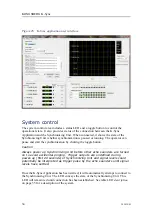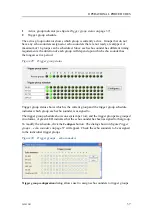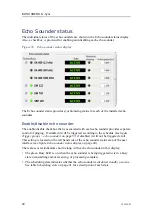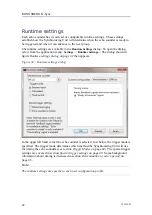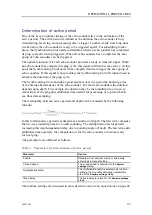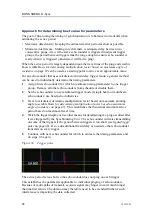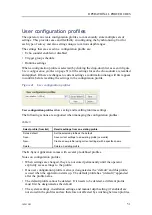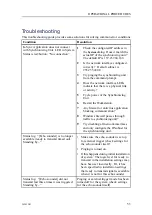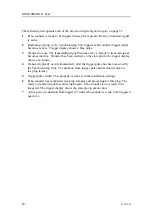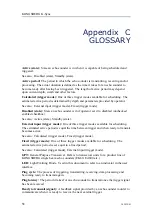
KONGSBERG K-Sync
Approach for determining best value for parameters
The goal of fine-tuning the timing of synchronization is to balance two tradeoffs when
estimating the active period:
• Maximize data density: Keeping the estimated active period as short as possible.
• Minimize interference: Making sure that there is adequate delay between two
consecutive pings. Also, if the same echo sounder is triggered in adjacent trigger
groups, the period between triggers must be long enough to ensure echo sounder is
ready when it is triggered (otherwise it will fail to ping).
When the active period is largely dependent upon the travel time of the ping and swath is
known, table
Basis for determining multiplication factor based on maximum angle of
on page 47 can be used as a starting point to arrive at an approximate value.
For an echo sounder that uses calculated or fixed delay trigger mode, a general method
can be used to individually determine the timing parameters:
1
Assign first echo sounder (for which to estimate timing parameters) to one trigger
group. Remove all other echo sounders from schedule or disable them.
2
Set the echo sounder to use calculated trigger mode if single beam or multibeam
echo sounder; use fixed period otherwise.
3
If set to calculated, determine multiplication factor based on maximum pointing
angle (use table
Basis for determining multiplication factor based on maximum
on page 47). This establishes the theoretical minimum active
period based on maximum travel time.
4
Watch the trigger display or use other means for determining if a ping occurred after
it was triggered by the Synchronizing Unit. The echo sounder will miss transmitting
on some of the triggers if the period between triggers is too short (see figure
on page 48). If so, add additional fixed delay as needed so that echo sounder
transmits on every trigger.
5
Continue with next echo sounder for which to estimate the timing parameters and
do steps 2-5 again.
Figure 38
Trigger pulse
The active period is too short so the echo sounder does not ping on each trigger
This establishes the parameters applicable to individual pinging of echo sounders.
Because of multi-paths of transmit, acoustic signal may linger in water much longer
than the first return. The duration may therefore need to be extended further if such
interference is impacting the data collected.
48
342435/B

